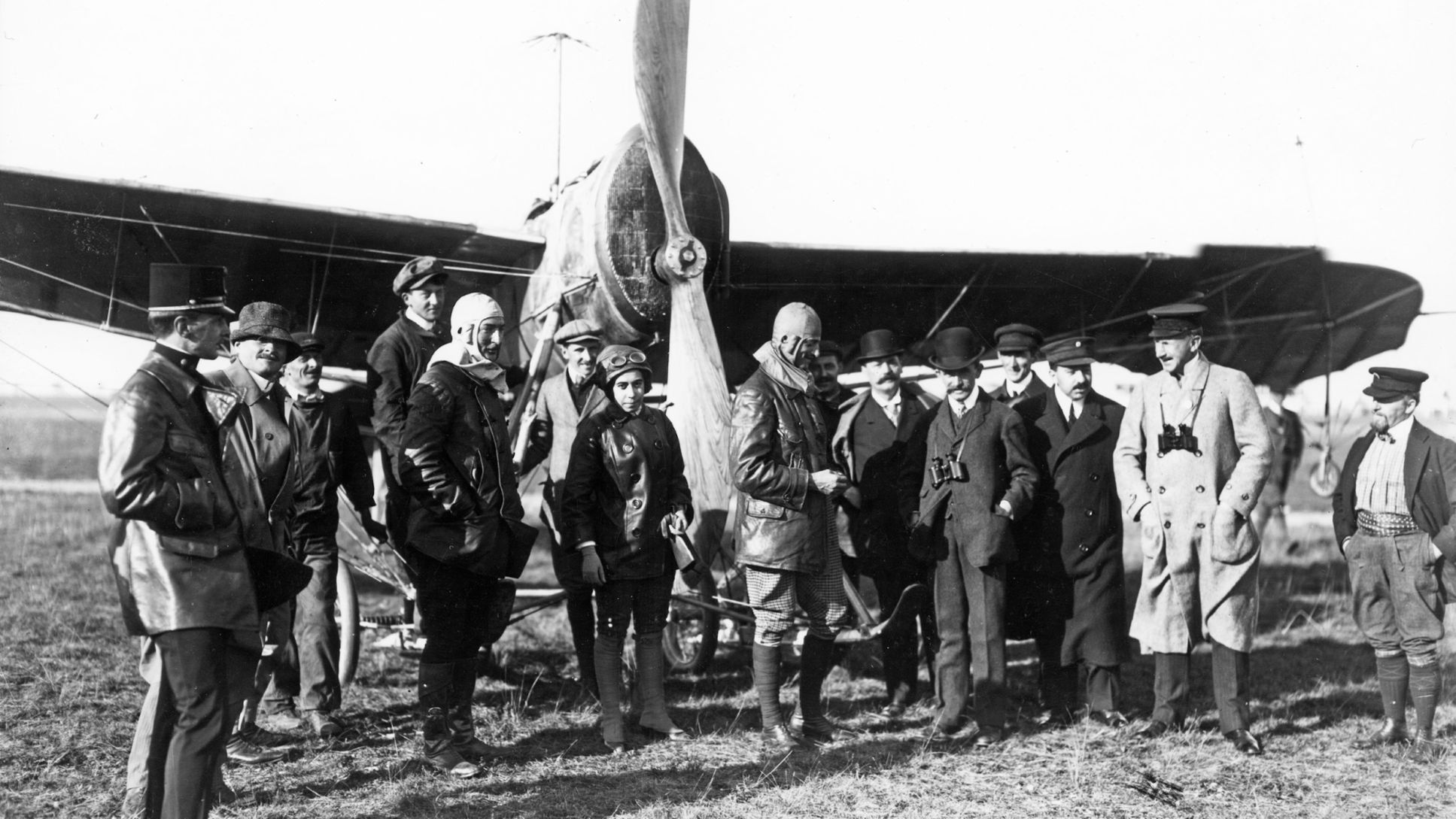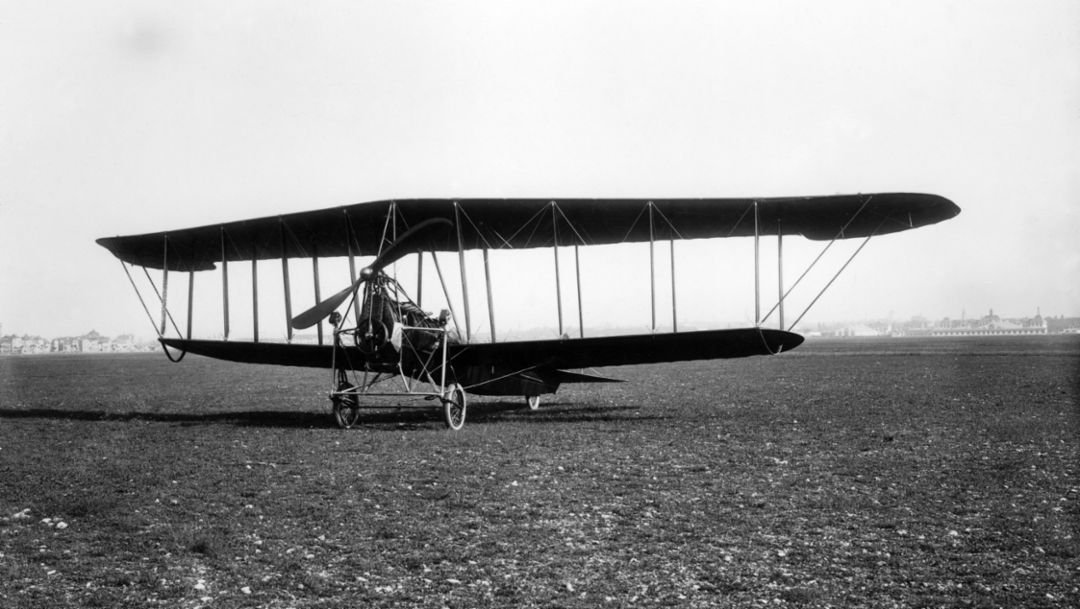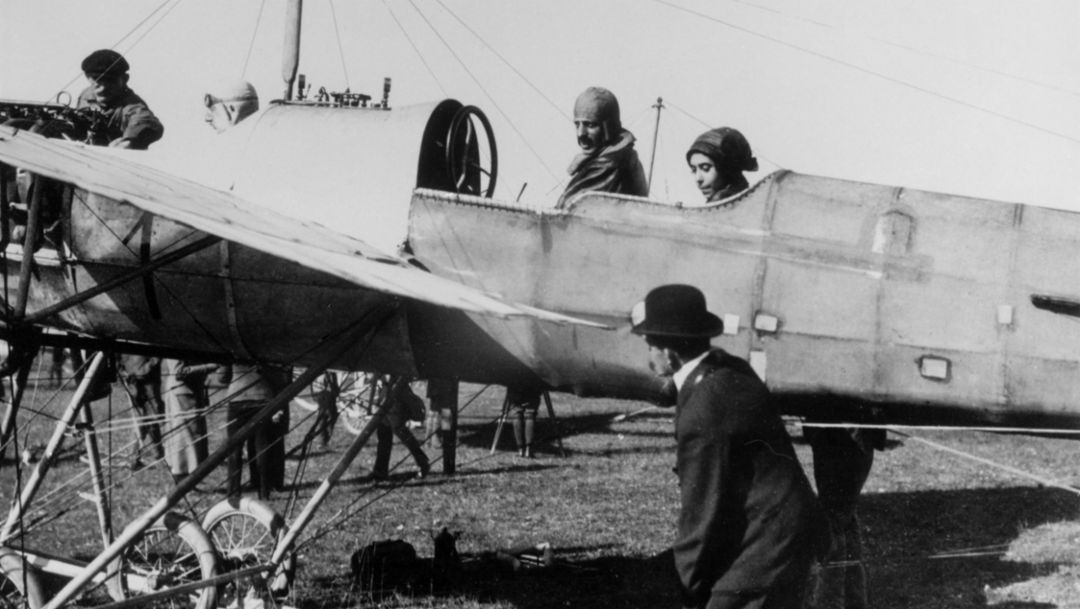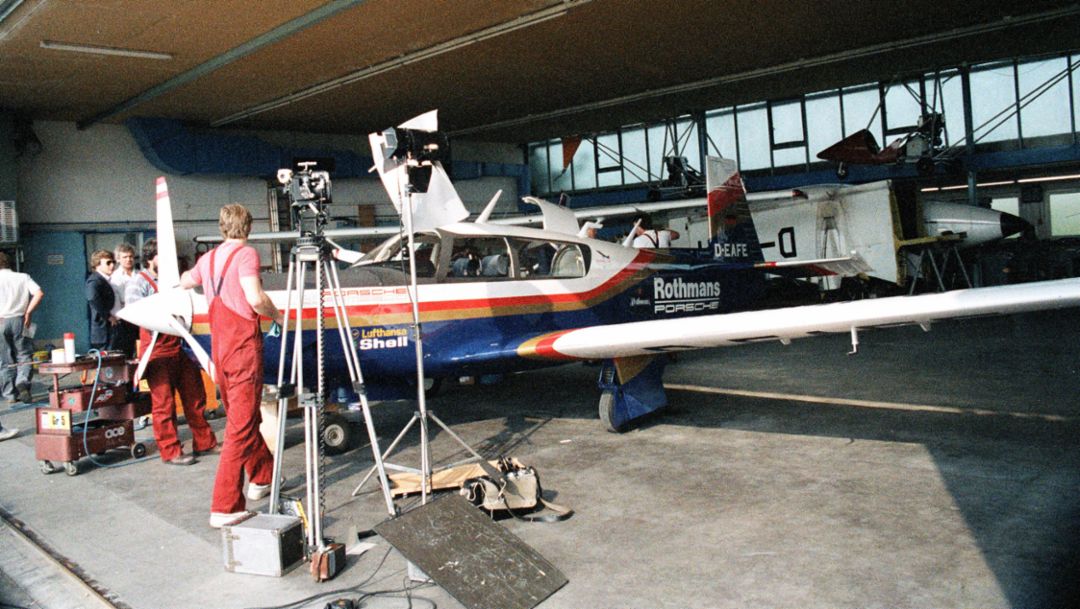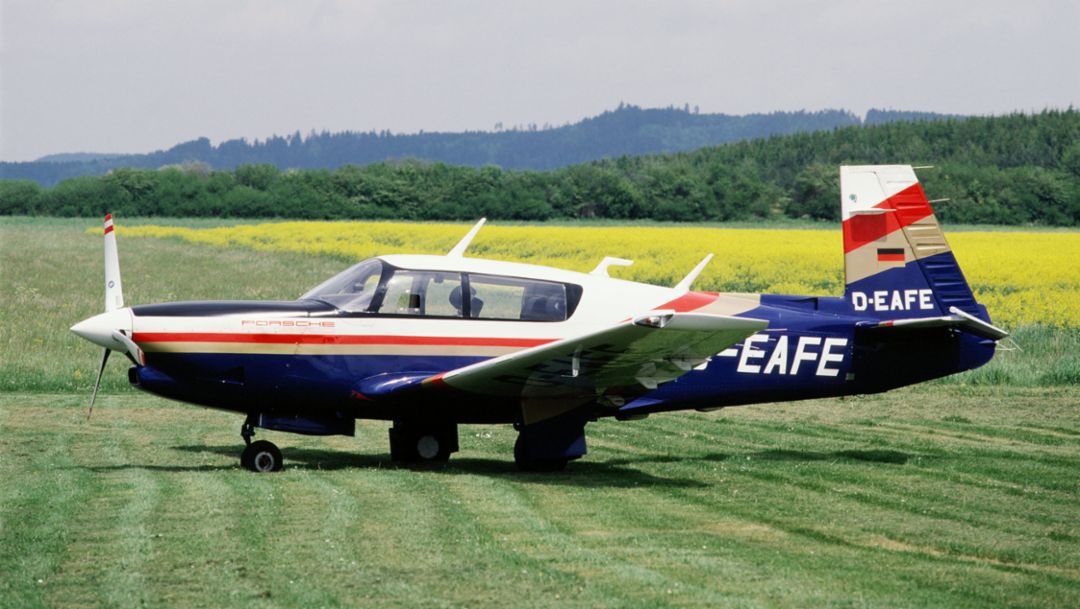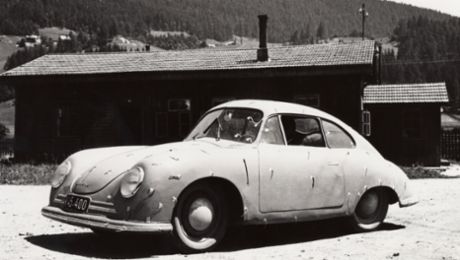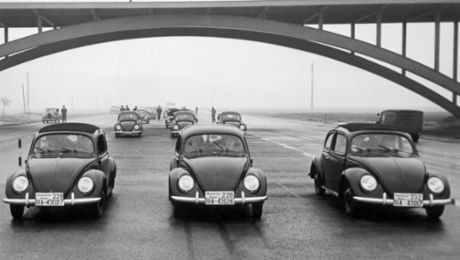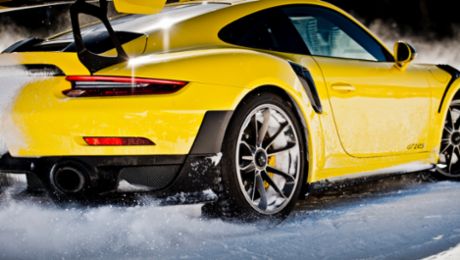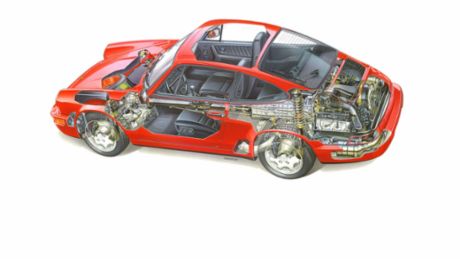On 16 January 1986, after more than six months, 300 take-offs and landings and 600 flying hours, Michael Schultz and Hans Kampik have almost made their way back to the small airfield in Donaueschingen. The list of what they have endured in their Mooney 231 is jaw-dropping: icy storms over Alaska, tropical weather in New Guinea, overzealous narcotics officers in Ecuador, extremely jittery military personnel in the air space above Angola. And now a blizzard is raging over the runway. Yet the small aircraft manages the last stage of its circumnavigation of the world – a triumph for man and machine. The 3.2-litre Porsche PFM 3200 aircraft engine has used 23,000 litres of premium fuel and 30 litres of oil, defied heat and cold and negotiated 100,000 kilometres in the air without complaint.
The PFM 3200 was by no means the first aircraft engine from Porsche. The history of Porsche aviation begins in the year 1908. As technical director of the Austrian Daimler-Motoren-Gesellschaft in Wiener Neustadt, Ferdinand Porsche’s task is to take on the engineering design of a four-cylinder airship engine for the Austrian military gas balloon of Major von Parseval. When the dirigible takes off for its maiden voyage on 26 November 1909, and the four-cylinder engine sets the balloon’s air propellers rotating for the first time, Ferdinand Porsche is hovering in the gondola above Wiener Neustadt – and is able to assure himself of the serviceability of his design at first hand.
Early aircraft engines
One year later, Ferdinand Porsche is performing as a racing driver. In what is known as the Prinz Heinrich car, he wins the race for touring cars over a distance of just under 2,000 kilometres. The 80-hp, four-cylinder engine – designed of course by the driver himself – powers the car to a sensational top speed of 160 km/h. It soon becomes apparent to Porsche that the engine has the potential for a third dimension – and he continues developing the four-cylinder engine to create a version for the Taube monoplane conceived by the Austrian aviation pioneer Igo Etrich. In the following years, Austro-Daimler under the management of Porsche designs numerous aircraft engines: engines with four, six or twelve cylinders and up to 400 hp, which are deployed in aircraft such as the Etrich-Renntaube designed for racing, flying boats and the Lohner-Pfeilflieger (Ludwig Lohner’s Arrow-flier).
In 1935, four years after founding his own engineering design office in the centre of Stuttgart, Ferdinand Porsche once again directs his energies towards aviation. The Type 55 aircraft engine produces an impressive 1,000 hp. It is followed by the Types 70 and 72, with 16 and 32 cylinders. In 1937, the office receives an order that impressively demonstrates the close symbiosis between automotive and aviation engineering: Porsche is entrusted with the task of designing the Mercedes-Benz T 80, a racing car intended to set the world land speed record. Its drive system is the Daimler-Benz-DB-603 bomber engine. Displacing just under 45 litres, the engine unleashes a colossal 3,500 hp – ultimately the vehicle is aimed at breaking the 600 km/h barrier between Dessau and Halle. In 1939, the monster takes up its position on the test stand for the first time. However, the outbreak of war thwarts the planned record attempt.
Flying with the flat engine
In 1955 – Ferdinand Porsche’s son Ferry is now running the company – permission is given for aircraft production to extend from gliders to include powered flight. Porsche recognises the potential in the field of sports aircraft and already has a suitable motor available as the basis for further developments in Zuffenhausen: the Porsche 356 is achieving magnificent sales – and is equipped with a powerful and efficient four-cylinder flat engine, also known as a boxer-four. Soon afterwards, Porsche presents the first post-war aircraft engine on this basis, with the Type 678 ranging from 65 to 75 hp. It is used in aircraft such as the Rheinflug RW-3, the first German small aircraft to go into production after the Second World War, or in the Elster, which the Bonn-based engineer Alfons Pützer designed on behalf of the newly founded German Federal Armed Forces.
The 911 takes off
Starting in 1976, the British company Airship Developments develops the SkyShip 500. In 1981 it sets out on its maiden flight, powered by the Porsche 911 Turbo – two Type 930 engines are on board. Pilots and amateur engineers have already tested the compact, powerful sports engines from the 911 models in sports aircraft. Its reliability and air cooling mean that the muscular flat engine of the 911 is ideally suited as an aircraft engine. It additionally produces a high output with a comparatively low consumption of premium fuel. The opportunity arises to go into production with a specific aircraft engine.
At the beginning of the 1980s, the creative minds at the development centre in Weissach set to work: they transform the sports car engine of the 911 into an aircraft engine with dual ignition, a second alternator, a spur gear drive for the camshaft and other modifications to the details. On 8 August 1982, a Cessna 182 Skylane takes off from the Mindelheim-Mattsies airfield south of Ulm in Bavaria. On board is the Porsche PFM 3200. Its mission is to complete the approval programme for the new aircraft engine. In 1984, the Porsche engine receives approval from the German authorities, and in 1985 from their American counterparts. As from 1987, the six-cylinder engine from Zuffenhausen goes into series production.
Even today, the PFM 3200 still puts other production aircraft engines in the shade. A Cessna 182 flying in cruising mode, for example, uses just 13 litres of premium fuel over a distance of 100 kilometres. Equipped with a muffler, the engine is also significantly quieter than other engines, it soon became known as the “Flüstermotor” or “whispering engine” among pilots. However, its greatest triumph is its ease of handling: it requires only one operating lever.
Despite its technical superiority, however, the aircraft engine has little economic success. The PFM 3200 simply appears on the market at the wrong time: despite all the earlier forecasts, worldwide sales of small aircraft engines stagnate at the end of the 1980s. Relatively low prices for aviation fuel, above all in the USA, make the upgrading of existing planes with the modern, efficient engine less attractive. Deliveries amount to only 80 units.
For its few proud owners, however, the PFM 3200 is the consummate aircraft engine. It still enjoys cult status among sports pilots, its performance and reliability are legendary and the circumnavigation of the world by Michael Schultz and Hans Kampik is a lasting memory. And despite all the economic losses, there was one gain in technical terms: “We had to completely redraft the engine of the 911 for the approval process,” Peter W. Schultz recalls. “And in doing so.
